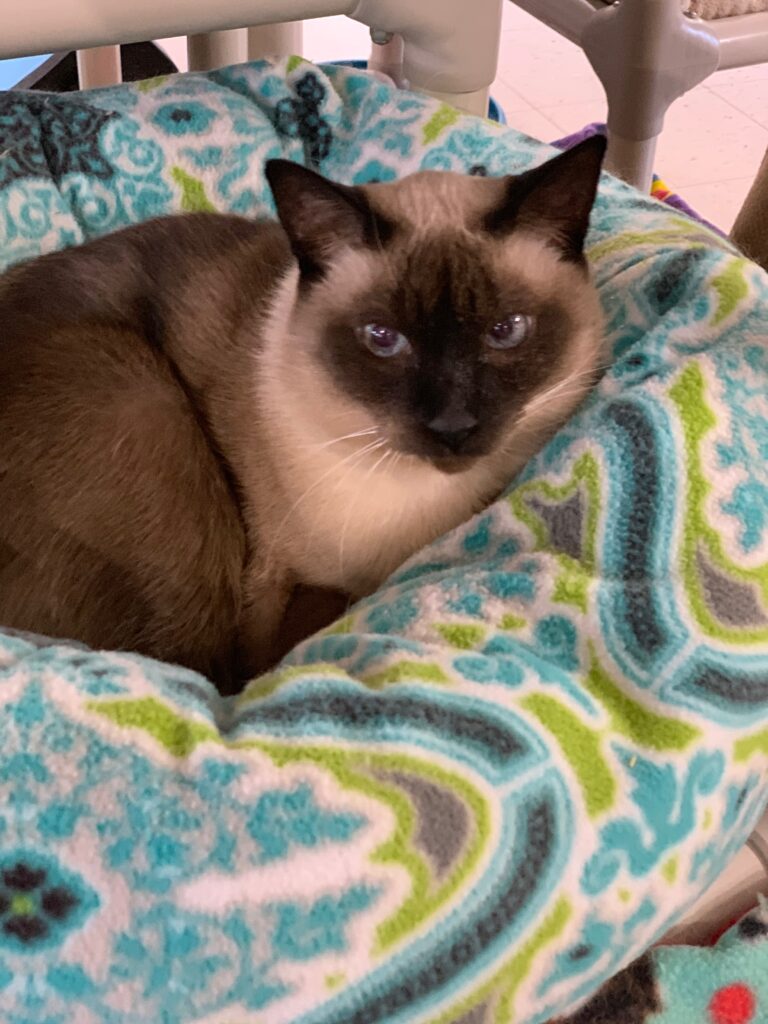In Part 1 on this topic, https://siriouslysiri.com/2022/02/06/dont-bite-the-hand-that-feeds-you-part-1/ we discussed some of the reasons that cats nip, or bite, as well as some of the ways to prevent this (sometimes) learned habit. In this post, let’s look at some of the ways to respond to, as well as to discourage, these biting behaviors. Keep in mind, however, that it is very helpful to try to determine the ‘why’ of these behaviors in the event that you or an external force is inadvertently causing the behavior.
While working to understand and ideally remove the cause of the behavior, it’s helpful to have a set response that you give whenever a bite occurs. One that comes naturally to most of us is the word ‘ouch’, and you can use this to your advantage by exaggerating this word in volume, tone, pitch, and length of utterance. To understand why this is effective, let’s backtrack a moment. When cats are kittens, they will romp and wrestle with their siblings; this activity usually accompanied by vocalizations of various sorts. This sibling interaction serves a very useful purpose in that the kitten is learning about both their strength and the effect that their behaviors have on others. There is an action/reaction sequence that occurs, teaching the kitten both what is acceptable and what is painful to another. (Realize, not every kitten has siblings and some kittens may be orphaned or may leave their family too early, so this learning experience may be lost.)
A high pitched, loud and exaggerated ‘OUCH’ will often accomplish the same thing, resulting in an arrest of the biting behavior. Very few cats are biting to be assertively aggressive, so realizing they have actually caused you pain may stop them in their tracks. If the cat is seeking attention (albeit inappropriately), removing yourself from the situation (and therefore the source of attention for the cat) often works as well, although it may not always be possible to do so. In cases where you can’t easily get up and leave the cat, removing the cat from the situation may need to happen – and this should be accomplished by a quick picking up, no cuddling or kind words, and a very quick deposit in another room – kind of like a time-out. (It should go without saying, but I have seen it happen aplenty, that when removing the cat from a situation you are doing so in a professional, business-like manner – there is no baby-talking or holding the cat close to your body or giving any kind of indication of warmth and comfort during this movement.) This time-out (ten minutes tops) must be used consistently so that the cat learns that biting behaviors result in loss of attention.
At this point it is necessary to point out that corporal punishment does not work with cats. Inflicting pain, whether it be a slap or a spank, will only make matters worse. Just like you would not play directly with your cat with your hands, you also don’t use your hands to inflict pain. You are much better served to use a ‘strong teacher voice’ and express how displeased you are about the situation.
Finally, don’t forget about positive reinforcement. When the cat is behaving and interacting appropriately, that’s the time to shower him with praise, with pets, perhaps even treats. Cats are smart creatures and if you provide consistent reinforcement, positive when they are behaving, negative when they are not, they can learn what behaviors are acceptable.
Questions or comments welcomed. We are always happy to try to help with cat misbehaviors in the home – feel free to contact us (vasrc@siameserescue.org) if you need advice. Many inappropriate behaviors can be curbed if addressed early, consistently, and by everyone involved.

